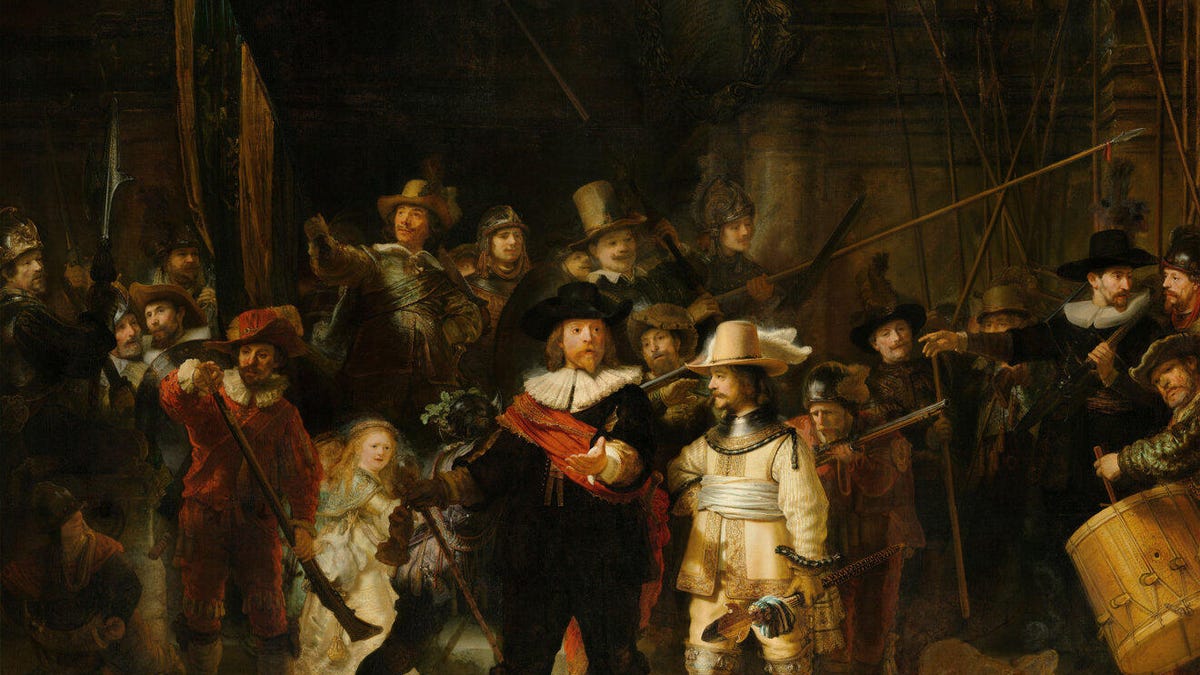See Rembrandt's The Night Watch in 'hyper resolution' as 44.8-gigapixel photo
Zoom in to see the most minute details of the masterpiece.
A museum in the Netherlands has published the largest, most detailed photograph ever of Rembrandt's famed 1642 painting The Night Watch, making it possible for anyone to zoom in on the masterpiece in exquisite detail.
The Rijksmuseum in Amsterdam, which is closed until June 1 due to the coronavirus crisis, shared the photo online Tuesday. It's 44.8 gigapixels (44,804,687,500 pixels) and made up of 528 exposures divided into 24 rows of 22 pictures stitched together with the help of neural networks.
Zoom in and you can see individual brushstrokes and specks of pigment.
Frans Banninck Cocq, mayor and leader of Amsterdam's civic guard, commissioned the artist around 1640 to paint the city's militia and police. Cocq appears as the central figure in Rembrandt's oil on canvas, which measures 3.79 meters by 4.53 meters (about 12 feet by 15 feet) and weighs 337 kilograms (743 pounds).
The painting is full of dramatic light and shadow, motion and mystery. Zoom in on Rijksmuseum's newly available "hyper resolution" photo and you can see individual brushstrokes on Cocq's elaborate white collar and flecks of pigment on his outstretched hand and the helmets and weapons of the civil guardsmen surrounding him.
The photo will not only serve as a fascinating resource for art lovers, but a snapshot in time that helps experts track how the painting ages and determine the best course of action to prevent further degradation.
The imaging team used a macro X-ray fluorescence scanner to scan the painting inch by inch. The tool uses X-rays to analyze chemical elements in the paint, such as calcium, iron, potassium and cobalt.
"The photograph is a crucial source of information for the researchers, and online visitors can use it to admire Rembrandt's masterpiece in minute detail," museum director Taco Dibbits said in a statement.
The photo is part of Operation Night Watch, an extensive research and conservation project taking place at Rijksmuseum in a clear glass chamber designed by a French architect. COVI9-19 interrupted on-site work on the project for two months, though the team continued to analyze research data from home. The work resumed in person Wednesday, but to meet social distancing requirements, no more than two people will work on the painting at once.
Online viewers can continue to track the project from afar, and visit the larger museum via a Google Street View tour.
Operation Night Watch started last July. The second phase of the project, which will involve the restoration of the painting, has been delayed due to the pandemic. Originally scheduled for later this year, it's now set to take place in early 2021.


